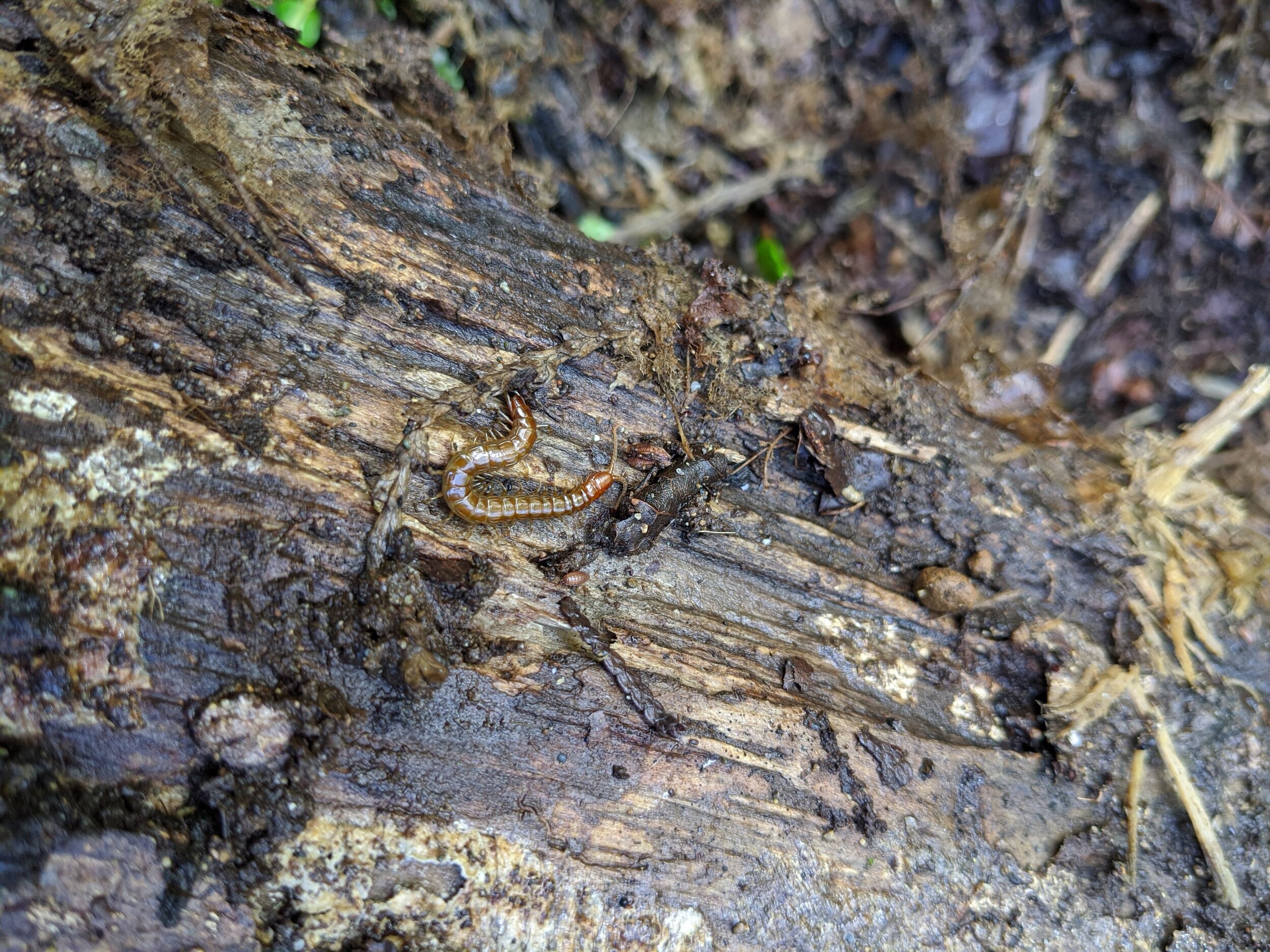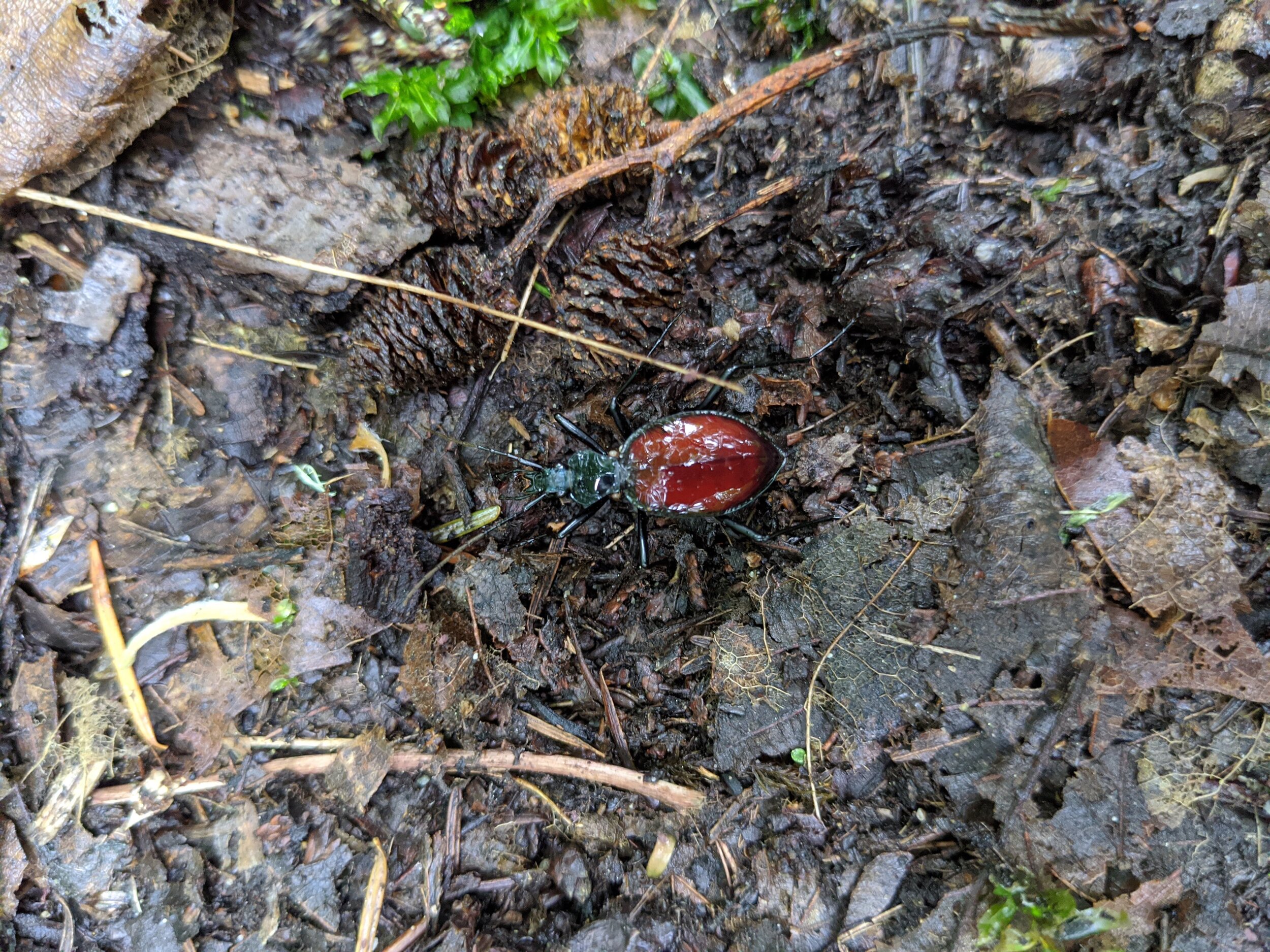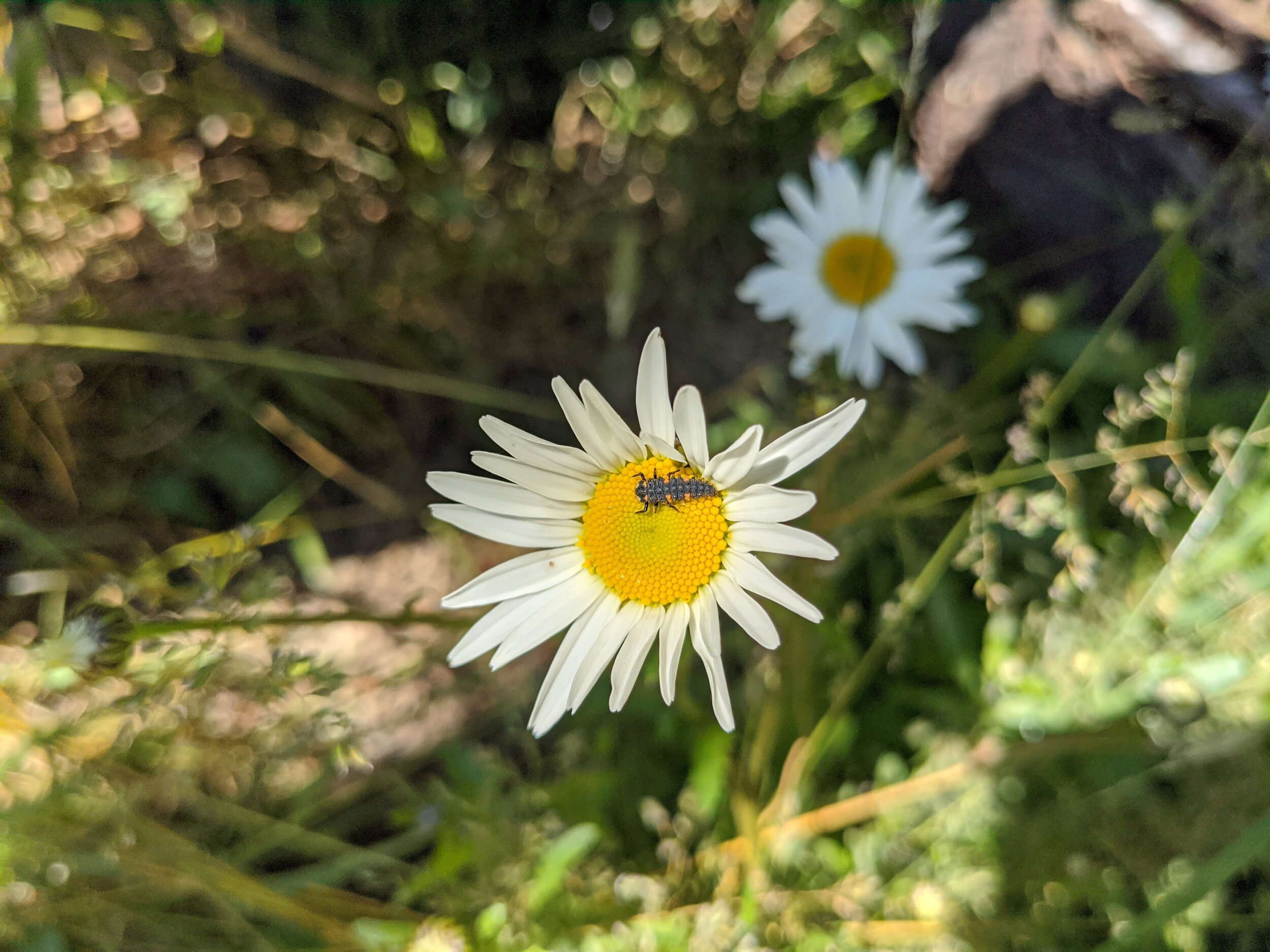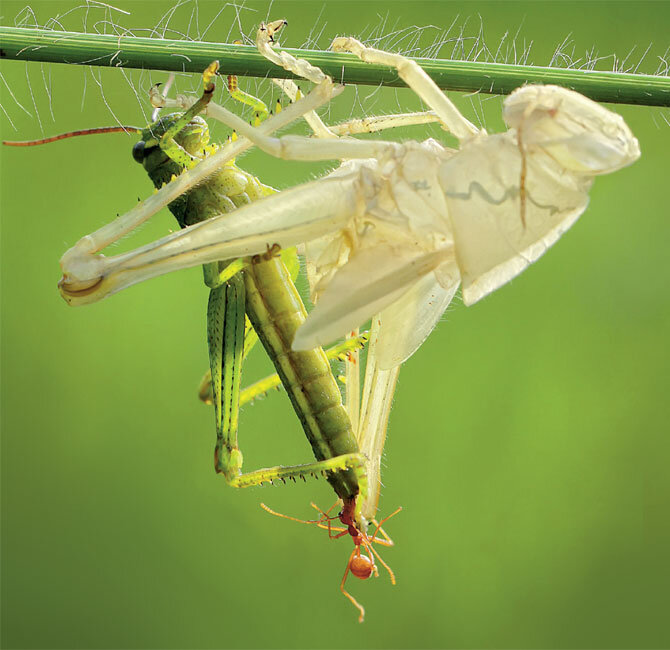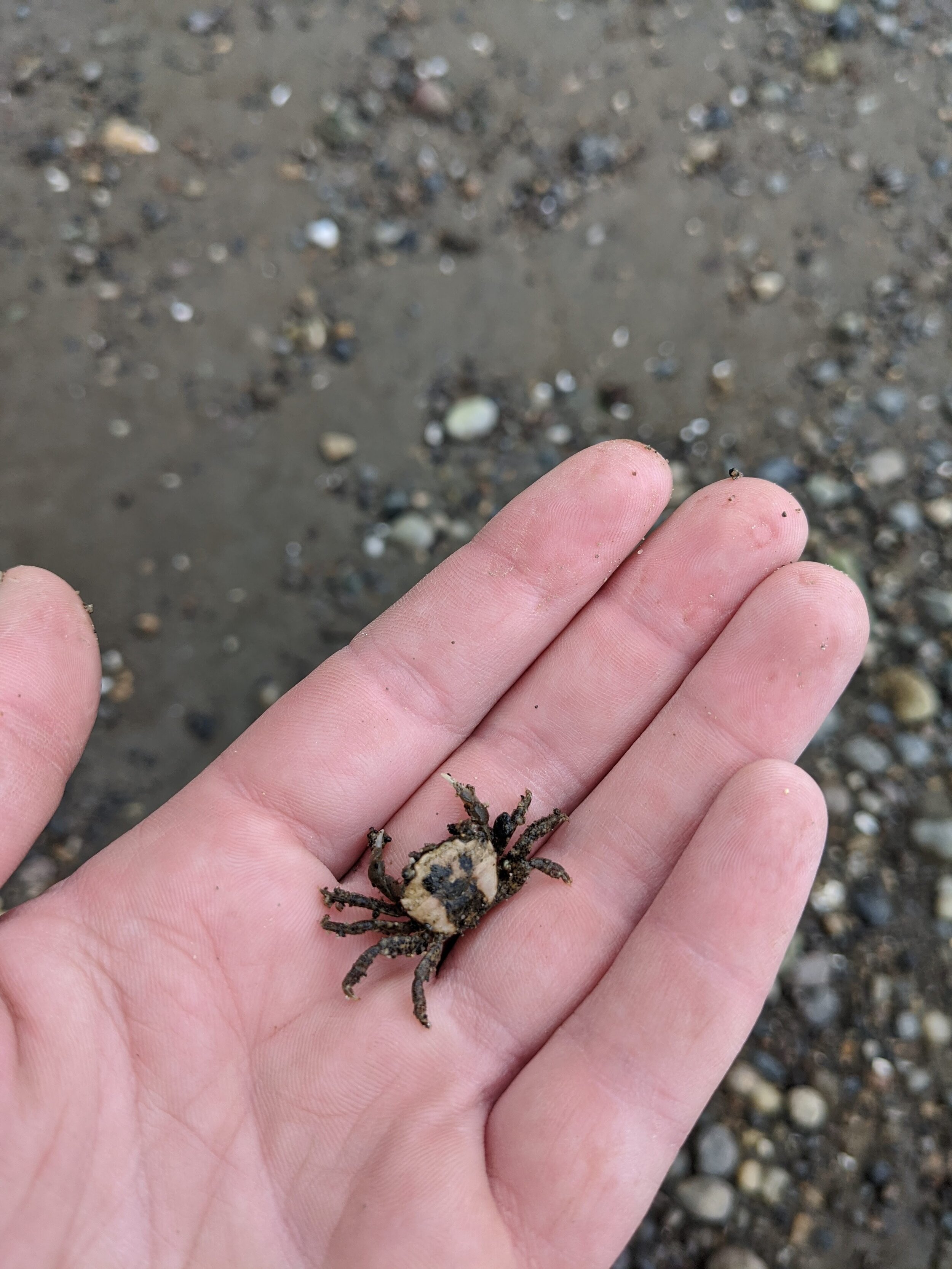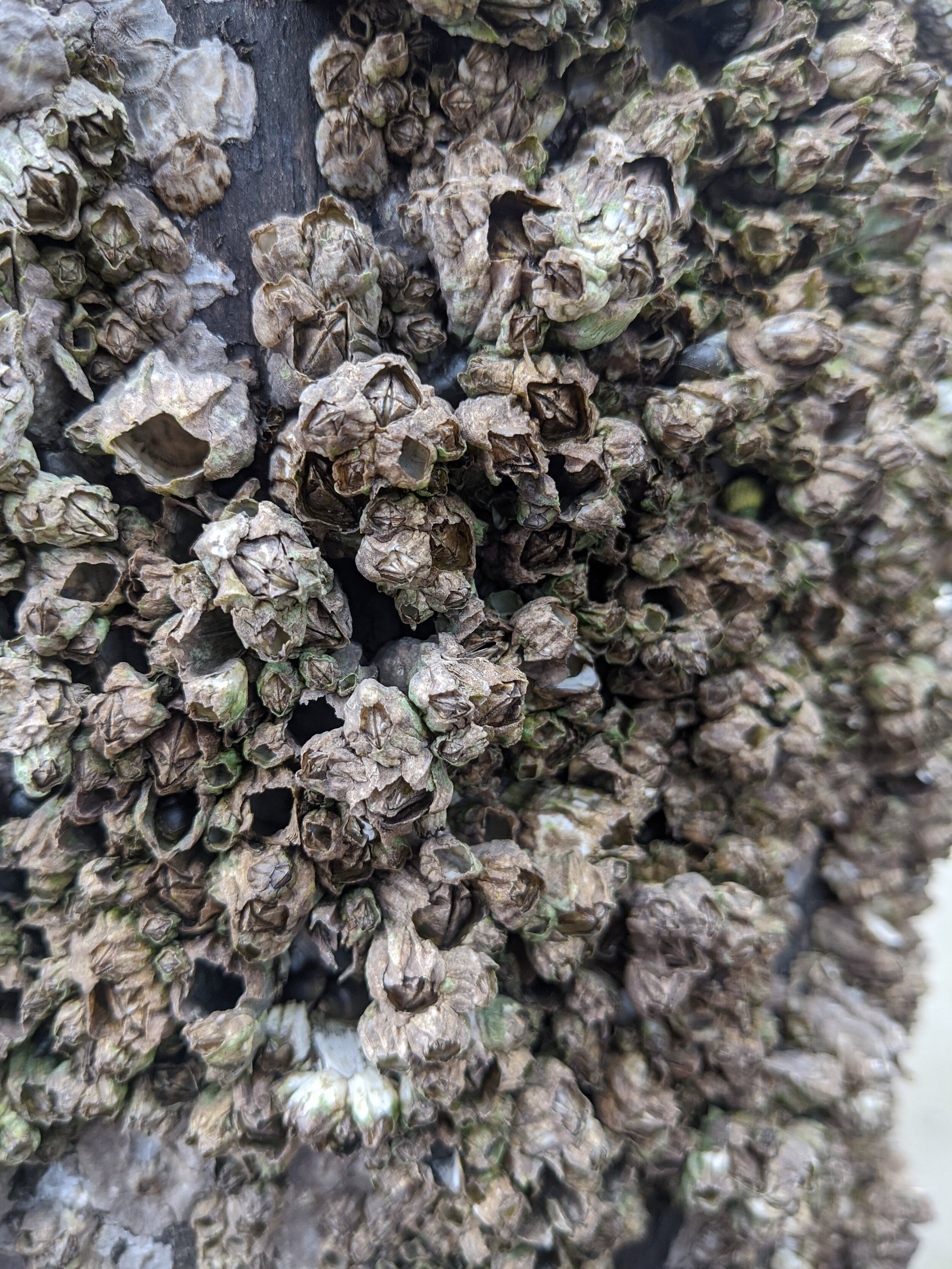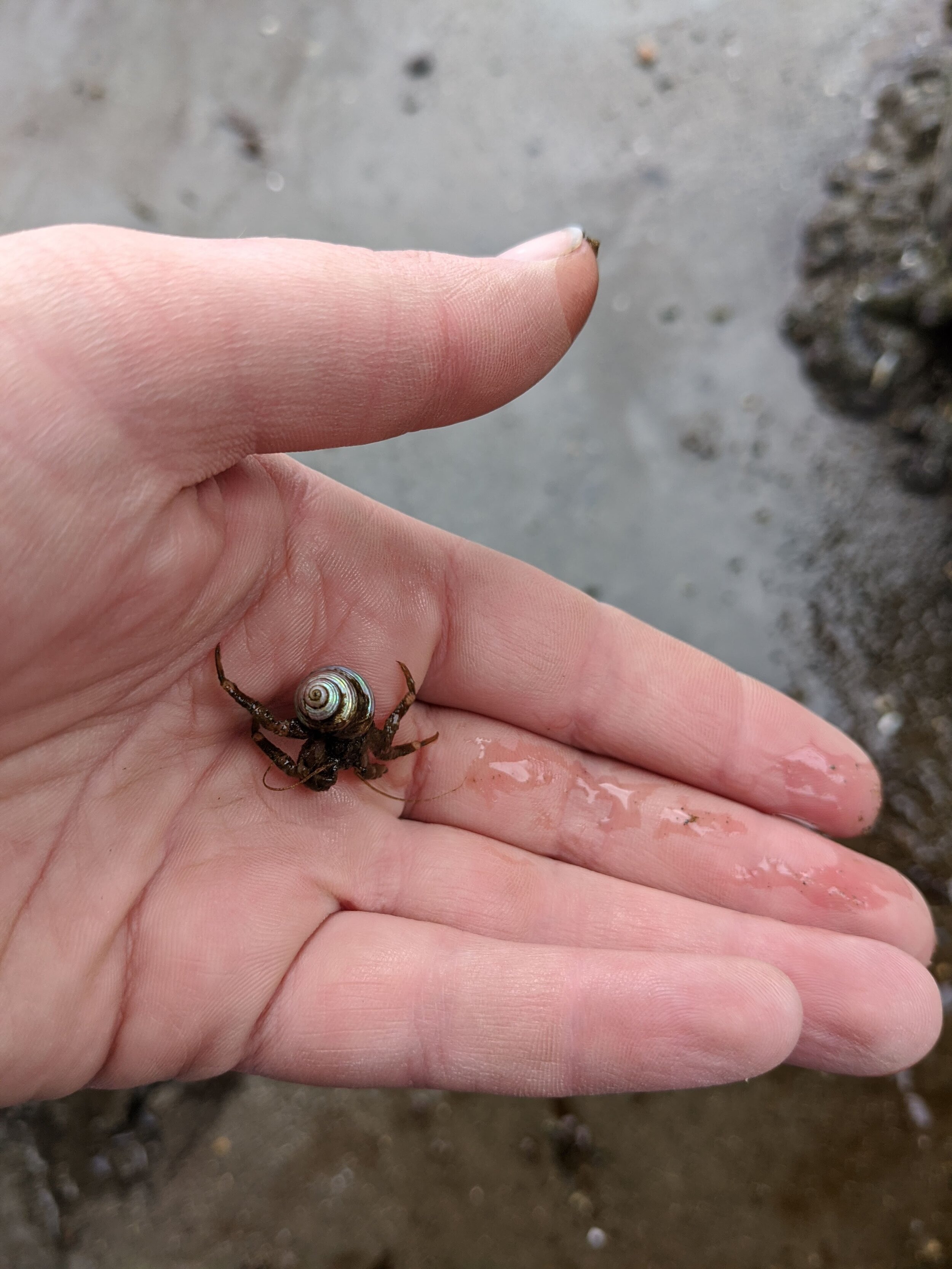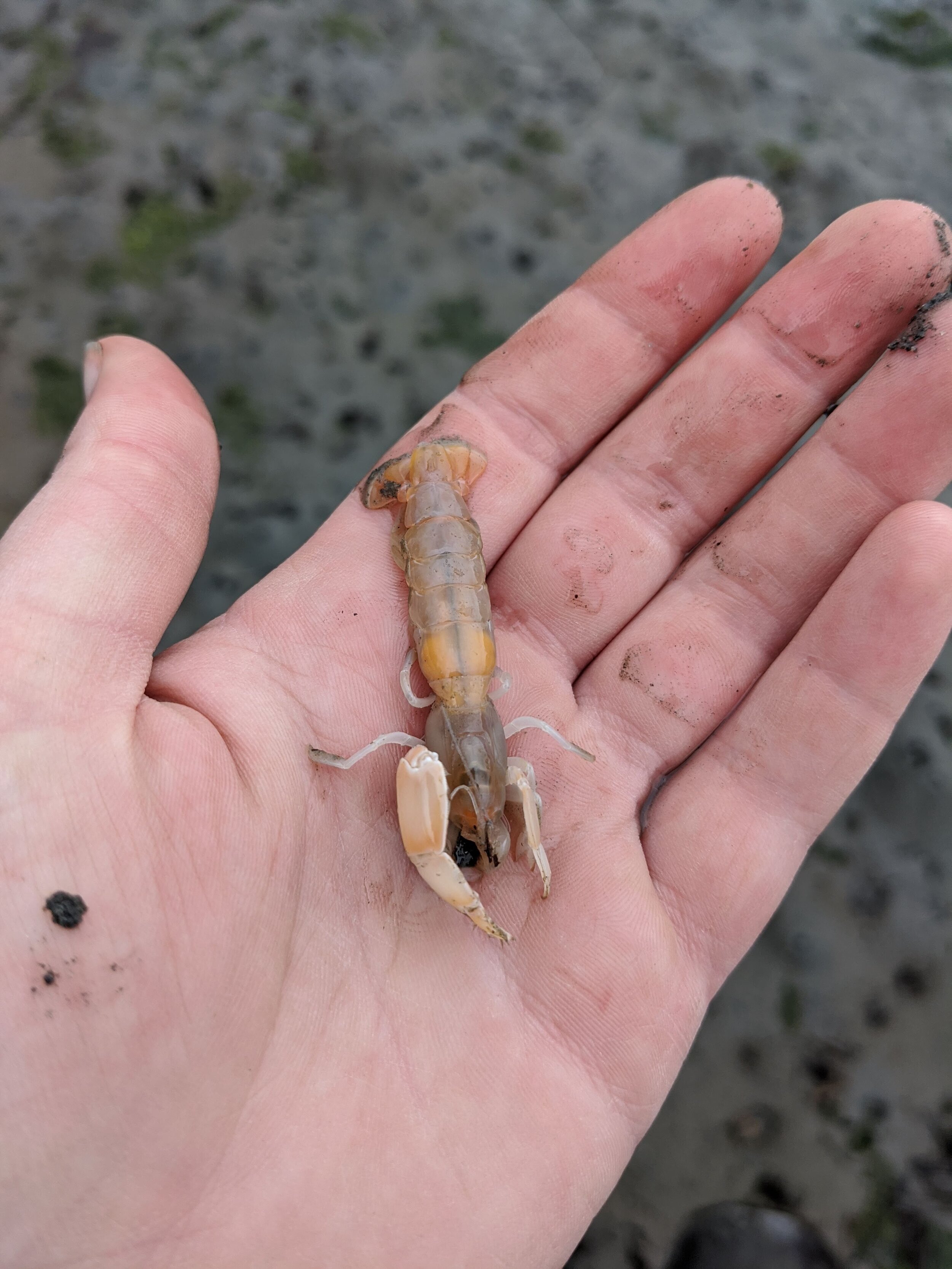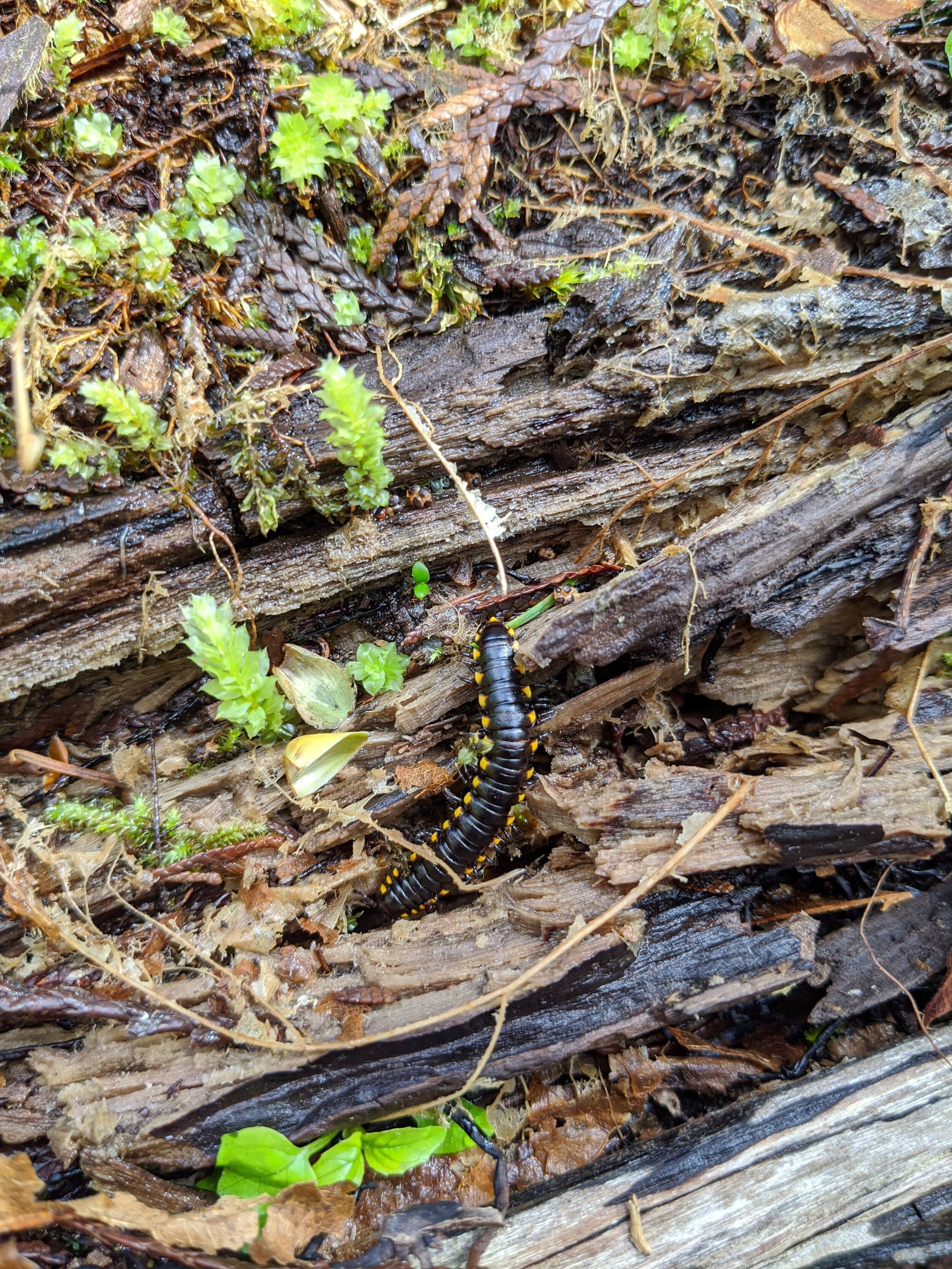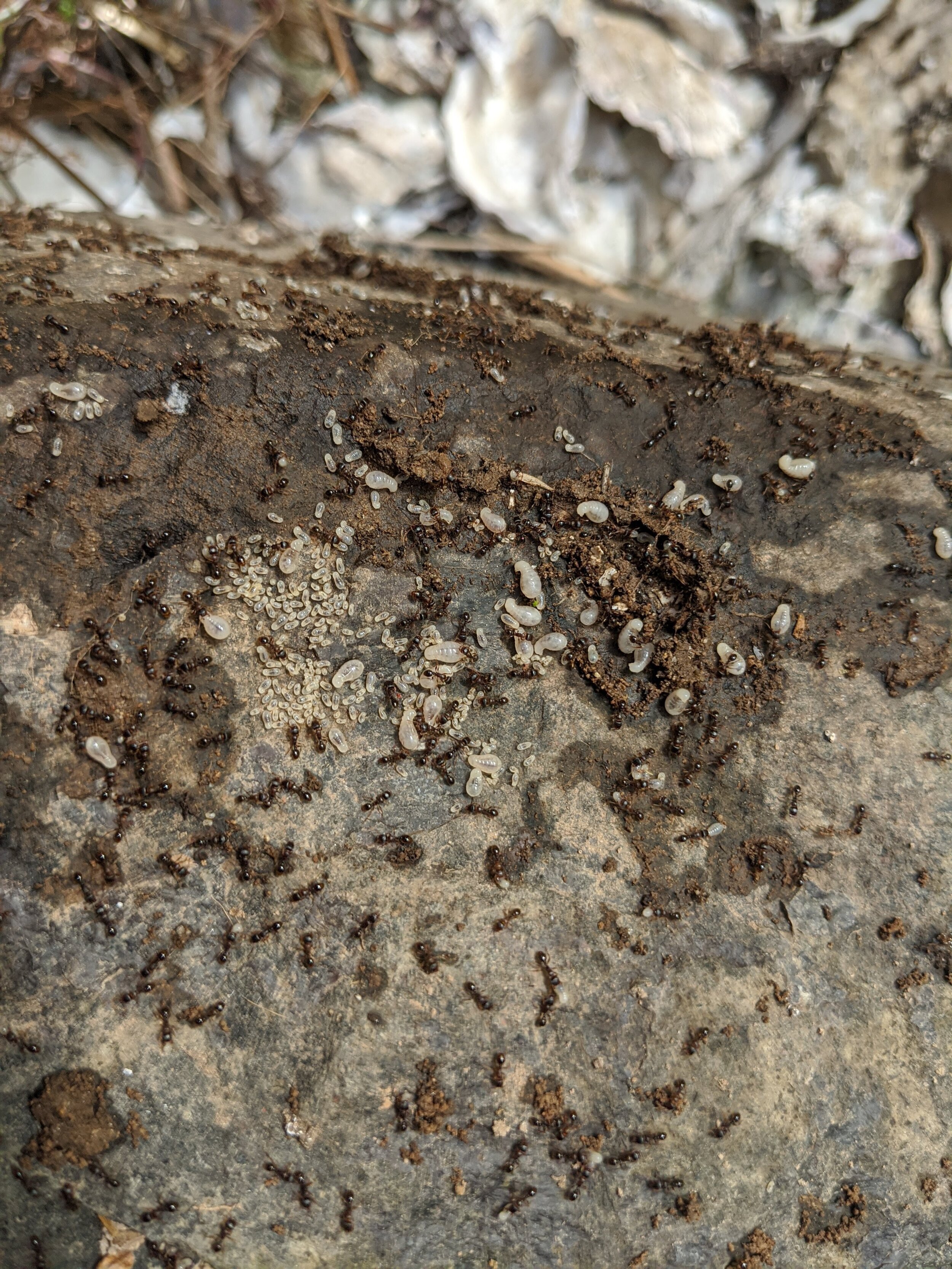Phylum Arthropoda
/The largest animal phylum is Arthropoda. Scientists have identified five MILLION different arthropod species currently living on Earth! This is about 80% of all living animal species. There may even be millions more because Arthropods are everywhere and many are so small it can be difficult to tell if they are different from another species.
Grasshopper Molting Photo: https://math.scholastic.com/issues/2017-18/101617/the-magic-of-molting.html#1090L
So, what are Arthropods? Chances are you have seen at least one today. The phylum Arthropoda includes all insects, crabs, spiders, centipedes, millipedes, shrimp, and more. All of these animals share a few features in common. One of these features is their jointed legs. This is what the phylum is named for: “Arthro-” means ”joint” and “-pod” means “foot.” Their body is also made up of segments. Many arthropods, like ants and flies, have three segments: head, thorax, and abdomen. Some arthropods, like millipedes, have way more than 3 segments and some, like spiders, have less. Spiders have a cephalothorax (head-chest) and an abdomen.
Without their joints, arthropods would have trouble moving around because their body is covered by a hard outer shell called an exoskeleton. The arthropod exoskeleton is made of chitin (KIE-tin). Chitin is similar to the protein that makes up our hair and nails, keratin. The chitin exoskeleton covers the whole body of arthropods, protecting them from predators and preventing them from drying out. This exoskeleton probably helped make arthropods the first land-dwelling animals. The exoskeleton does make the growing process interesting for many arthropods. They grow larger within a rigid, smaller shell. In order to grow, arthropods must shed, or molt, their exoskeleton. When crabs do this, for example, they back out of their too small exoskeleton and then fill their body with water, expanding their new outer shell. Now their new shell is a little too big for them and they have some room to grow. When they molt, their new shell is soft and they are more vulnerable. They need to find a place to hide until their new exoskeleton hardens. Molting also gives animals a chance to regrow a lost leg or antennae.
Photo: https://wdfw.wa.gov/sites/default/files/publications/00028/wdfw00028.pdf
All Arthropods go through metamorphosis, or changing of their body shape. A baby arthropod often looks very different from the adult. The classic example of this is a caterpillar turning into a butterfly. The young form of an arthropod, after they hatch from their egg, is called a Larva. Then, depending on the arthropod, they may have a nymph or pupa stage before becoming an adult. I really like the metamorphosis of crabs because larval crabs, or zoea, are basically unicorns.
Arthropods are extremely important to all life on Earth. All arthropods are food for other animals, including other arthropods. Even humans eat arthropods: crab, shrimp, lobster, and many different insects! Many zooplankton are arthropods, controlling the phytoplankton population and acting as prey for many larger marine animals. Many arthropods are also decomposers, helping recycle nutrients in an environment. Arthropods also pollinate flowers, helping plants reproduce. Even spiders, an arthropod that is a common fear among humans, is extremely important in controlling populations of other arthropods such at mosquitoes, flies, wasps, and more. Think about this the next time you feel the need to squash a “bug” or a spider. Escort it back outside instead.
Here are a few arthropods I have photographed at camp:
